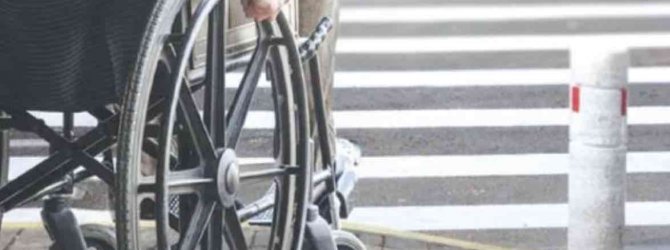-
Elimination of environmentally induced handicaps allows ...
Elimination of environmentally induced handicaps allows people with disabilities to engage in daily life

An Accessible Environment… is one of my rights!
An accessible environment is one that is disability-friendly, in which barriers to accessing infrastructure, facilities, and transportation are removed and eliminated. The inaccessible environment is a major challenge that hinders people with disabilities from obtaining their economic and social rights. To ensure their inclusion into the cultural, social, environmental, physical and economic life, accessibility to the physical environment -as freely as everyone else- is essential.
According to the Law on the Rights of Persons with Disabilities No. 20 of 2017, article 33, the term “environmental accessibility” is defined as: the construction of buildings, roads, facilities, and other public and private sector venues in a way that is accessible to all the public, and making adjustments in accordance with the Building Code Requirements for Persons with Disabilities as issued in the provisions of the Jordan National Building Code and any other special standards issued or approved by the Council. Environmental accessibility is eliminating all environmentally induced barriers from time the people with disabilities leave a place until reaching their destination, and back.
The difference between the living reality of people with disability in Jordan and their legal rights is significant. The accessibility standards and disability-related codes are legally secured, yet, the commitment to implementing them on the ground has been limited. Poor enforcement of the law is clear in public buildings, health and educational facilities, recreational facilities, streets and pavements and more. Thus, Jordan lacks an accessible environment that would safely, conveniently and easily support the presence of people with disabilities effectively and freely in the social and economic.
An evidence-based policy paper published in 2020 by the department of Social Justice at the West Asia-North Africa (WANA) Institute that tackled the importance of environmental accessibility of public buildings in Zarqa, showed that people with visual and motor disabilities are significantly less satisfied with the environment and see it as a barrier to accessing services. The paper also showed the deep implications of poor environmental accessibility on people with disabilities, directly on their economic, social, civil and political life. The paper also illustrated that people with disabilities are exposed - specifically visual and motor - to physical harm as a result of poor environmental accessibility, they are likely to be at risk of falling and colliding. It does not come as a surprise that there is a rise in frustration, despair and anxiety among people with disabilities due to the many forms of barriers that require removal. Despite the international treaties and regulations, codes, national and constitutional laws, poor implementation remains as a violation of legal rights that ultimately contribute to their exclusion and marginalisation.
Cooperation is the Solution
The rights of people with disabilities must be enfoced in all aspects of life with all its details including ensuring their safety, and this requires intensified efforts and cooperation among public institutions, civil society and members of the community, including people with disabilities and their parents and family. Cooperation needs to include: raising awareness of the importance of environmental accessibility, the importance of the representation of people with disabilities in decision-making positions such as municipalities, and increasing people with disabilities' knowledge of their rights and provide them with tools to defend them.
Translated from Arabic by Liliann Saudi

